 Outstanding Citizens of Nikolaev
Outstanding Citizens of Nikolaev
Mykolayiv is connected with many famous people, each of whom left a vivid trace in history, in science and cultural development, shipbuilding or navigation.
A founder of steam navigation and trade on the Black Sea, M.O. Arkas, lived here.
The first excavations of Khersones were conducted by Lieutenant-General Z.O.Arkas.
General F.F. Bellinsgausen was one of the discoverers of Antarctica. He is memorialized in the Alley of Admirals at the Museum of Shipbuilding and the Fleet.
Early tactics for steam powered naval fleets were developed by Admiral G.I.Butakov and he, too, is memorialized in the Alley of Admirals.
Crimean war heroes Admirals P.S. Nakhimov and V.A. Kornilov are also featured in the Alley of Admirals.
Hydrographers and researchers Admiral M.P. Manganari and a Rear Admiral E.P. Manganari wrote and published "The Black Sea Atlas."
Major-General O.D. Nechvolodov wrote the four-volume collection "Legend about Russian Land."
The first director of the first observatory in the South of Ukraine, K.K. Knorre, was also a corresponding member of the Petersburg Academy of Sciences.
The first use of a gas turbine for marine propulsion was designed here by S.D. Kolosov.
.
D.S. Samoilovych (Sushchyns'kyy), a founder of epidemiology who went on to membership in 12 Western European academies and scientific associations, began his scientific work here.
Ukraine's first school of practical farming was established in 1790 in Bogoyavlens'k (now the Korabel'nyy district of the city) by professor M.G. Livanov.
L.D. Trots'kyy (Bronstein) got his first experience as a political organizer in Mikolayiv.
P.I. Sumarokov, O.S. Pushkin, O.M. Gor'kyy, V.V. Mayakovs'kyy, M.S. Shchepkin, and N.O. Ryms'kyy-Korsakov all spent time in Mikolayiv. Ukrainian theatre stars N.K. Skadovs'kyy, P.K. Saksagans'kyy, and M.L. Kropyvnyts'kyy all played here.
The first book on the history of the Ukrainian people written in Ukrainian - "History of Ukraine - Rus'" was written here, by M.M.Arkas.
Architect and Egyptologist D.E. Efimov, the astronomer and academician F.O. Bredihin, and Arctic researcher G.L. Brusylov were all born in Mikolayiv.
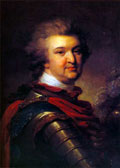 Grygoriy Oleksandrovych Potyomkin-Tavriches'kkyy (1739-1791) Grygoriy Oleksandrovych Potyomkin-Tavriches'kkyy (1739-1791)
Svitliyshyy prince, Field Marshal - General, Commander-in-Chief of the Black Sea Fleet, Governor-General. He founded Mykolayiv in 1788 and gave our city its name on 27 August 1789.
top ↑
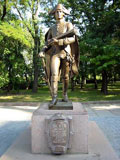 Mykhailo Leontiyovych Faleyev (1730-1792) Mykhailo Leontiyovych Faleyev (1730-1792)
became "the first citizen" of Mykolayiv when he laid the first stones for the first shipyard. In life, Faleyev was well-known for his wealth but also for his wonderful deeds. Before the founding of Mikolayev, Faleyev was at Kremenchug (according to some historical data - Elisavetgrad). He was a merchantman there, and supplied the army with goods and provisions. He cleared part of the Dnieper rapids and, at his own expense, opened a waterway to Kherson. In 1788, he built the flotilla that captured Ochakov. Nearly 80 years before the official end of serfdom, and with no payment, Faleyev gave freedom to nearly all of his serfs. Still, the creation of the shipyard and the city of Mykolayiv were his most famous works. Unfortunately, life gave him only four years for those projects; he died in 1792. After his death, writers noted that he accomplished ten years of work in those last four years. From 1789 through 1792, Faleyev and his assistants oversaw construction of four public buildings, 158 private houses, 209 peasant's huts (mazanka), 13 baker's shops, and 149 different kinds of shops. An Orthodox Church, later the Admiralty Cathedral, was built and a Roman-Catholic church was completed. By the time of Faleyev's death, foundations had been laid for a military school, soldiers' quarters, rope and arms factories, and an early water works. Gardens and vineyards were laid out and wine-growing was established.
top ↑
Ivan Ivanovych Knyazev (1760-1823)
a military engineer, was the first architect of Mykolayiv. He developed the first overall city plan for Mykolayiv and led several building projects for the Admiralty. With architect F.P.Devolan, Knyazev worked on multiple port and shipyard projects. Knyazev's vision gave Mykolayiv its wide straight streets and geometric layout, oriented to the compass.
top ↑
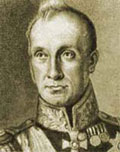 Oleksiy Samuilovych Grage (1775-1845) Oleksiy Samuilovych Grage (1775-1845)
was Chief Commander of Fleets and Ports, Vice-Admiral, Military Governor of Sevastopol and Mykolayiv. A Scotsman by birth, he was a broad-minded and talented scientist. Beyond navigation and shipbuilding, his interests included mathematics, physics, astronomy, medicine, jurisprudence, and economics. As the head of shipbuilding and municipal services, he used all of his knowledge and pursued all of his interests. He built the Sea and Astronomic Observatory in Mykolayiv. Under his leadership the Officer's Assembly, the first city landing place, market, and many other buildings were constructed, all in classical style. In 1823, he directed the addition of lighting to streets and 48 lamps were installed. The first specialized school, a parish school with a department for girls, was opened and in 1833, a three-class school. He applied economic principles to shipbuilding and revived the city's economic base. Oleksiy Grage was an attentive master for Mykolayiv and his tenure as governor was a golden epoch for the city.
top ↑
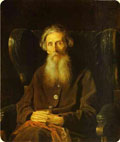 Vladimir Ivanovych Dal (1801-1872) Vladimir Ivanovych Dal (1801-1872)
was a professional sailor, a participant in many battles, a doctor, an ethnographer, a writer, and finally the author of a famous Russian dictionary. Born in Lugansk, Ivanovych spent his childhood and boyhood in Nikolaev. After finishing the Naval College in Petersburg, he returned to Nikolaev for naval service. His legacy and life work (it took 53 years) is the four volume set "Explanatory Dictionary of Living Russian."
top ↑
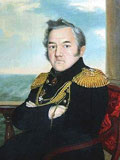 Mykhail Petrovych Lazarev (1788-1851) Mykhail Petrovych Lazarev (1788-1851)
took command of the admiralty in Nikolaev in 1833 when Alexander Grage was transferred to Petersburg. At that time, the Admiralty had a heavy work load. The shipyard was busy with ships of a new design, being constructed in new ways. Lazarev's continued development of the shipyard encouraged further growth of the city. The economic law was clear: "if the shipyard grows, so does the city." In 1838 he initiated a great reconstruction of the Admiralty shipyard. More than fifty buildings, including a rope (cable) factory and a foundry, three shipbuilding slipways, and a fitting-out landing stage, were built. Working conditions at the shipyard improved with the addition of a five ton movable crane. The first paved streets appeared in the city. Instead of simply hiring contractors, Lazarev insisted that citizens be taught craft skills. As shipyard development fueled growth in the city, business expanded and employment opportunities increased.
top ↑
Bohdan Alexadrovych Glazenap (1811-1892)
Russia did not prevail in the Crimean War of 1853-1856 and under the Paris treaty of 1856, Russia lost the right to keep a fighting fleet on the Black Sea. That marked the beginning of a difficult period for Nikolaev. A reduction of the Admiralty began, shipyards were idled. Of the seven pre-war shipbuilding crews, only one, with about one thousand masters, remained. Many Nikolaev citizens had no work. Merchants cut the delivery of goods and prices rose to extravagant levels. Citizens began to leave the city.
It was against this background that Rear Admiral Bohdan Alexandrovych von Glazenap became Military Governor in 1860. Many consider him the savior of the city. In 1862, he lifted the ban on foreign ships at the local harbor. A commercial port was created and a brisk grain trade began. Soon, Nikolaev was the third port in Russia in export volume. Despite the crisis of the Admiralty, Governor Glazenap revived the city and achieved great success.
In 1863, a male gymnasia was opened at the former navigation school. Several months later, a female gymnasia was opened, followed by the opening of the first vocational school. At that time, there were nineteen schools of elementary literacy in Nikolaev. The newspaper "Nikolaevskyy Vestnyk" began publication in 1865. The first city hospital was built. A branch rail line "Nikolaev-Znamenka" connected Nikolaev to lines going to Moscow and Petersburg.
The primary factors in the revival were a broadening of the city's economic base and the application of new methods to development. During the 1860s, Nikolaev's population reached 38,000. More than 5,000 owned their own homes. By the end of Glazenap's tenure, people were returning to the city.
top ↑
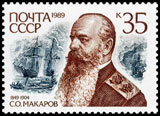 Stepan Osypovych Makarov (1849-1905) Stepan Osypovych Makarov (1849-1905)
was born in Nikolaev. He played key roles in the history of Russian marine activities at the end of the nineteenth and beginning of the twentieth century. In his youth, Makarov gained great experience and practical knowledge of the sea. In 1901, the world's first high-powered ice-breaker, "Ermak," was designed and built at Makarov's request. Twice, Makarov commanded "Ermak" on voyages to the shores of Spitsbergen and New Land. When war broke out between Russia and Turkey in 1877, he became a battle officer and was given command of the steamer "Velikyy Knyaz Konstantine". In less than a year, Makarov earned six battle awards. In 1904, at the beginning of the Russian-Japanese war, he was appointed commander of the Pacific Fleet but died on 31 March of that year when a Japanese mine sank the battleship "Petropavlovsk."
top ↑
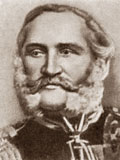 Nikolay Nikolaevych Arkas (1852-1909) Nikolay Nikolaevych Arkas (1852-1909)
authored the opera "Kateryna", the book "History of Ukraine-Rus" and organized Nikolaev "Prosvyta". A son of the Commander-in-Chief of the Black Sea Fleet, Arkas devoted his life to the revival of Ukrainian national culture. His lifework was realized only at his own expense.
top ↑
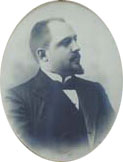 Nikolay Pavlovych Leontovych (1876-1940) Nikolay Pavlovych Leontovych (1876-1940)
Nikolaev is not only famous for shipbuilding - it is also famous for its zoo. The zoo is the legacy of Nikolay Pavlovych Leontovych. He was the city's mayor at the beginning of the twentieth century, an unsettled time marked by wars, revolutions, strikes, and worker walkouts. But Leontovych loved animals and believed that being around them would improve people's lives.
In April of 1901, he led creation of the city aquarium, providing space for it in his house. The aquarium was well-known for its great collection (more than one thousand specimens, representing fifty species of fish and amphibians) and modern equipment (compressors, warmers). At the time, there were only seven similar collections in Europe.
In 1918, Leontovych's collection was nationalized and he was appointed the first director of the State Aquarium. Later a zoological department was opened and bison, camels, deer, and ostriches were brought from the Askanya-Nova preserve.
Later, bears, wolves, foxes, and monkeys were purchased. As the animal collection grew, the territory of the Aquarium/Zoo was enlarged and enclosures were built.Leontovych's fate was tragic, however. In 1937, accused of "participation in a military officer's organization," he was arrested and imprisoned. According to his survivors, he died in prison in 1940
The Zoo remains one Nikolaev's most significant sightseeing attractions.
top ↑
Print page »
|

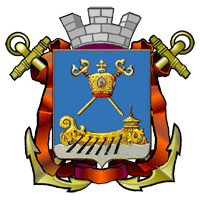

 Outstanding Citizens of Nikolaev
Outstanding Citizens of Nikolaev






